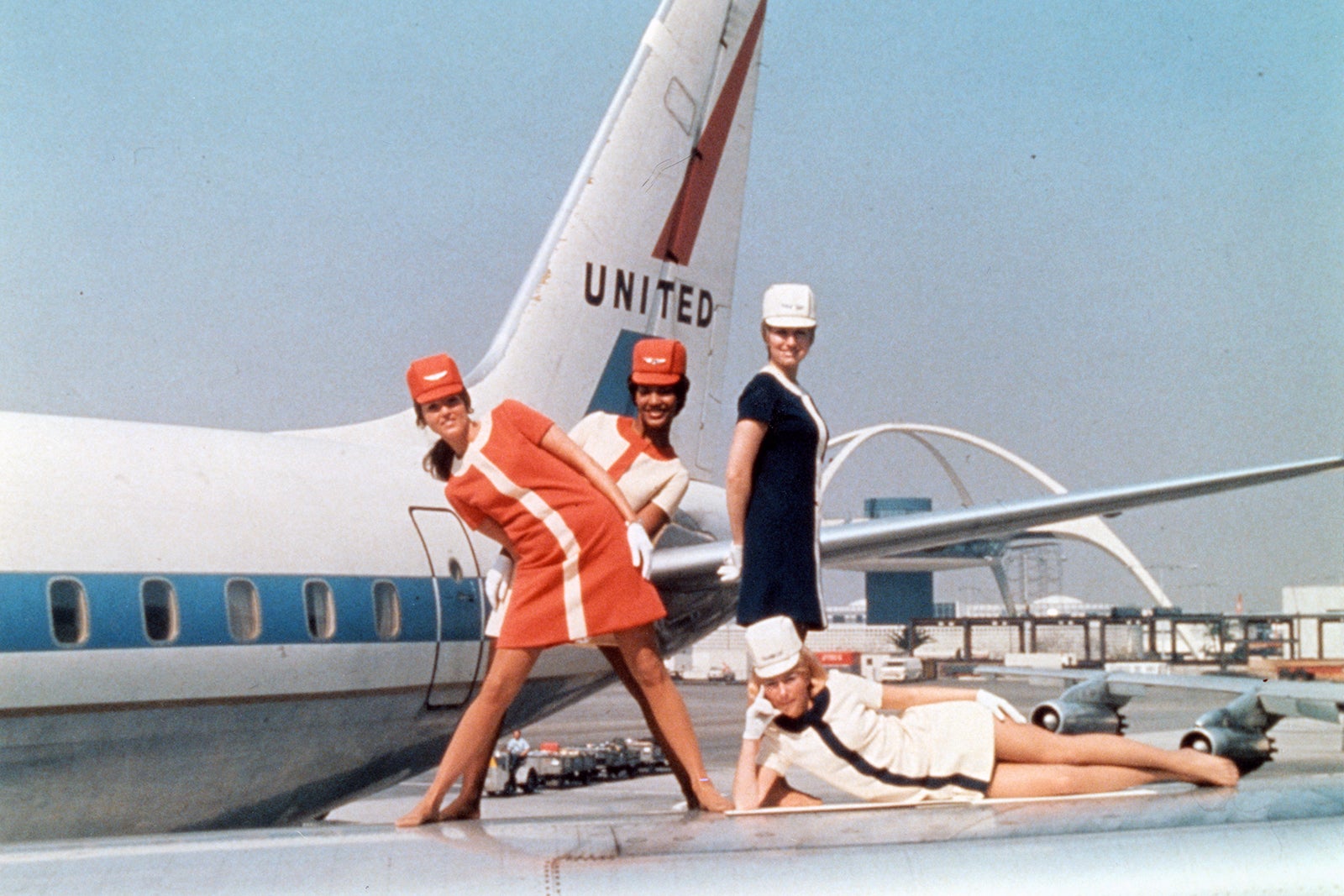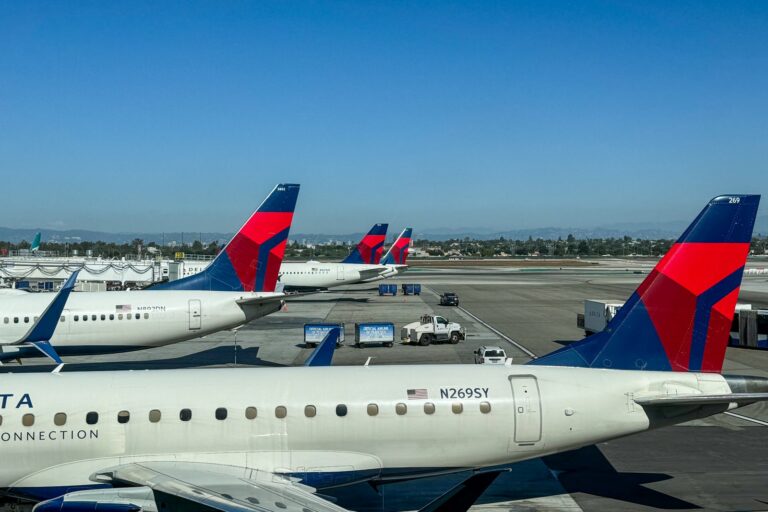In the 1950s and ’60s, “stewardesses were glamorous. They were beautiful. They were poised,” says former Delta Air Lines flight attendant Casey Grant at the beginning of a new documentary film about the history of flight attendants.
But over time, thousands of stewardesses, as these workers were called then, were also angry and exasperated by the working conditions they had to endure in the sky and on the ground.
“Fly With Me,” premiering Tuesday, Feb. 20, on PBS’ “American Experience,” tells the story of women hired as stewardesses when airline policies dictated everything from their weight to their marriage status who went on to fight — and win — battles for equal pay, gender and race equality and workplace reform.
“So many of the women who became flight attendants were young, ambitious, and adventurous,” says Sarah Colt, who directed the film with Helen Dobrowski. “Some thought they’d do the job for two or three years and then follow societal norms of the ’50s and ’60s and then get married and move on. But the job became much more of a career for them.”
Early in the film, we learn about the adventure, romance and world travel that stewardess jobs promised in addition to the many rules and requirements airlines placed on women who landed those coveted jobs in the golden age of jet travel.
“You got this chart, and you wouldn’t even get an interview if your height and weight was more than listed on that chart,” says Ann Hood, former TWA flight attendant and author of the “Fly Girl” memoir.
On the job, pilots — who were all male — could be married, but stewardesses could not. On the road during layovers, pilots were up in their own hotel rooms, but stewardesses had to share. Stewardesses could not wear eyeglasses and had to retire once they reached age 32 — long before they might put in enough years to secure a pension. Not to mention, they were reviewed regularly for appearance, with weigh-ins.
“No other job offered as much freedom with such a high cost of conformity,” says Julia Cooke, the author of “Come Fly the World: The Jet-Age Story of the Women of Pan Am,” in the film.
Over time, stewardesses got savvy. Their fight for rights in all aspects of the job mirrored, matched and helped push forward what was taking place in the broader women’s and equality rights movement.

Daily Newsletter
Reward your inbox with the TPG Daily newsletter
Join over 700,000 readers for breaking news, in-depth guides and exclusive deals from TPG’s experts
The film includes almost two hours of firsthand accounts and archival footage of everything from vintage airline commercials to TV news reports, as well as comments and insights from historians and legal experts. Step by step, “Fly With Me” takes us through important milestones in the history of the flight attendant rights movement, expertly making connections to world events underway at each stage.
Featured flight attendants in the film include Patricia “Pat” Noisette Banks Edmiston, who became one of the first Black flight attendants after filing a lawsuit with the New York State Commission on Discrimination in 1956. It took four years before the court ruled in her favor.
Barbara “Dusty” Roads, who worked for American Airlines, explains how in 1965 she and fellow flight attendant Jean Montague were first in line to file a complaint based on the Civil Rights Act of 1964 the first day the Equal Employment Opportunity Commission opened its Washington, D.C., offices.
Title VII of the Civil Rights Act of 1964 prohibits workplace discrimination on the basis of race and color, national origin, sex and religion. The lawsuit Roads and Montague filed claimed American Airlines’ policy that stewardesses must retire at age 32 constituted gender discrimination.
Hundreds of other complaints from other flight attendants followed. And three years later, the EEOC ruled that the mandatory retirement age for female flight attendants had to go. Soon after, the ban on married flight attendants was out the door as well.
Former Northwest Airlines flight attendant and union activist Mary Pat Laffey also shares her story of what happened after she became the first female purser at Northwest Airlines and discovered that the airline was paying her male counterparts more.
Laffey filed a class-action lawsuit in 1970, and by the time the case went to trial, 70% of the Northwest Airlines stewardesses had joined the lawsuit. A judge ruled in favor of the flight attendants in 1974, but Northwest appealed.
Eleven years later, the U.S. Supreme Court sided with the flight attendants, awarding $60 million in back pay and striking down airline rules against wearing glasses. It also struck down the weight limitations that only applied to women.
“Women were finally allowed to have the same benefits that the men had,” Laffey explains. “If you were capable, you could have a man’s job.”
While that class-action suit was making its way through the courts, flight attendants founded Stewardesses for Women’s Rights in 1972. It gained support from Gloria Steinem and other luminaries of the women’s rights movement.
Airline industry ads of that era that tried gaining market share, such as one from Southwest Airlines with hot pants-wearing flight attendants and National Airlines’ “Fly Me” campaign, didn’t help. But flight attendants and their unions continued fighting — and continue the fight today — for a wide range of workplace protections, fair pay and equal rights.
“The women of ‘Fly With Me’ broke barriers by becoming flight attendants in the first place, but what is so remarkable is that they were also on the vanguard of fighting for workplace equity,” Colt says. “By exploring this history, we show the power of individuals to make change and how gender, race and class are critically intertwined.”
Where to see ‘Fly With Me’
“Fly With Me” is directed by Sarah Colt and Helen Dobrowski and is executive produced by Cameo George. The film premieres as part of the “American Experience” series on PBS on Tuesday, Feb. 20, from 9 to 11 p.m. EST (check local listings) and will also stream on PBS.org and the PBS App.




